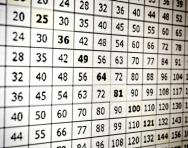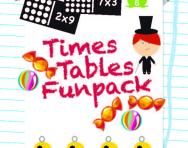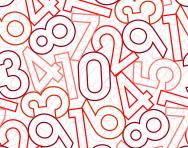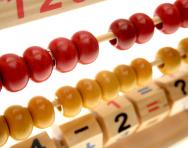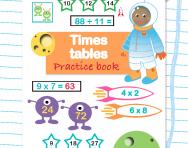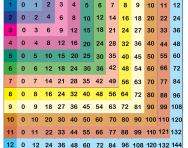Times tables: 10 things every parent needs to know
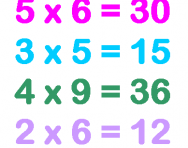
1. Times tables are a brilliant brain-training exercise for primary-schoolers. Good times-tables knowledge is vital for quick mental maths calculations and problem solving; for example, if a child knows that 6 x 3 = 18 they will be able to work out that 6 x 30 = 180 or 60 x 3 = 180 almost instantly.
2. Times tables are often taught separately from other areas of maths to begin with, but they’re the building blocks for many of the topics children learn in KS2, such as division, long multiplication, fractions and percentages.
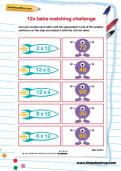
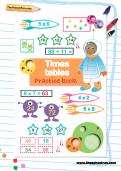
Get FREE Times Tables Resources
- Printable and interactive worksheets
- Practice workbook
- Games pack
3. Your child needs to know all their times tables (up to the 12 times table) by the end of Year 4 (and they'll be tested on their knowledge in the Year 4 Multiplication Tables Check). In Years 5 and 6 they will be moving onto much more complicated concepts, such as multiplying and dividing using four-digit numbers, plus problem-solving involving fractions and percentages. It is therefore vital that they enter Year 5 really confident in all their times tables.
4. Alongside learning their times tables, it is vital that children learn the division facts for each times table (for example: division facts for the 3 x table are: 6 ÷ 3 = 2, 9 ÷ 3 = 3, 12 ÷ 4 = 3). Make sure you test them on these until they are really confident with them. It will put down a solid foundation for dividing larger numbers later in KS2.
5. Quick recall of multiplication tables really benefits from constant repetition (do you remember chanting times tables in class when you were in primary school?). Get into the habit of practising times tables with your child whenever the opportunity presents itself, but only do it in short bursts (when you’re stuck in a traffic jam, say, or washing their hair in the bath).
6. Some children like to learn by rote; for others it doesn’t work at all. To support their learning, work out what will make times tables stick in your child’s mind, whether that’s singing them, putting them into practice with puzzles, playing games with them or writing them out.
7. How your child learns times tables at school will be very influenced by their teacher’s individual style. Some teachers choose very traditional methods, others prefer to play games and set practical challenges to help children learn. Ask your child's teacher for tips and tricks to help with times tables learning.
8. Your child may protest that they're useless, but we rely on times tables constantly in everyday life. If your child has to work out how much storage they have left on their iPad, how many trading card packets they can buy with their pocket money or how many biscuits each person gets when a packet is being divvied up, they’ll use their times tables. Remind them of all the everyday ways they can put their skills to use – for example, if you go to a football match or the cinema, ask your child to count the number of seats along a row and then the number of rows and then multiply them to work out how many people are in the venue.
9. Knowing times tables makes learning easier in secondary school and beyond. Good multiplication skills are a great help when starting to learn algebra, as well as chemistry, physics, biology and ICT, all of which depend heavily on maths knowledge.
10. According to a study published by Ofsted, the schools watchdog, many primary schools fail to teach times tables properly. “Lack of fluency with multiplication tables is a significant impediment to fluency with multiplication and division,” the report states. “Many low-attaining secondary pupils struggle with instant recall of tables.”
How children learn times tables in primary school
Year 1 times tables learning
Children are taught the simplest form of multiplication, counting up in 2s, 5s and 10s.
Year 2 times tables learning
Children are formally introduced to multiplication, related division facts and repeated addition for the numbers 2, 5 and 10.
Year 3 times tables learning
A crucial year for times tables learning. Children are expected to learn multiplication facts for the 3, 4 and 8 times tables and to use practical and written methods to multiply and divide two-digit numbers (for example, 15 x 4).
Year 4 times tables learning
A ‘completing’ year for all multiplication facts up to 12 x 12. Children also continue to develop their skills in multiplication of two-digit numbers by a one-digit number, using harder combinations of numbers.They will also learn to multiply a three-digit number by a one-digit number.
Year 5 and Year 6 times tables learning
Children will be expected to be really confident in all their times tables (up to the 12 times table) by the start of Year 5. During Years 5 and 6 they will become confident in multiplying larger numbers (four-digits by two-digits, for example).
Times tables learning: support for parents
To help your child with their times tables knowledge, browse through our 60+ times tables worksheets, solve some times tables puzzles and celebrate your child’s achievement by printing out some certificates.
Our information articles offer advice and tips to help your child with specific times tables:
- Tips and tricks for learning the 2 times table
- Learning the 3 times table: expert advice
- The 4 times table step by step
- The "easy" times tables: 5s, 10, 11s and 12s
- The hardest multiplication table to learn: the 7 times table
- The "tricky" times tables: 6s, 8s and 9s
TheSchoolRun subscribers also have access to mock Multiplication Tables Checks to help practice times tables recall in the run-up to the Y4 times tables assessment.

Give your child a headstart
- FREE articles & expert information
- FREE resources & activities
- FREE homework help

